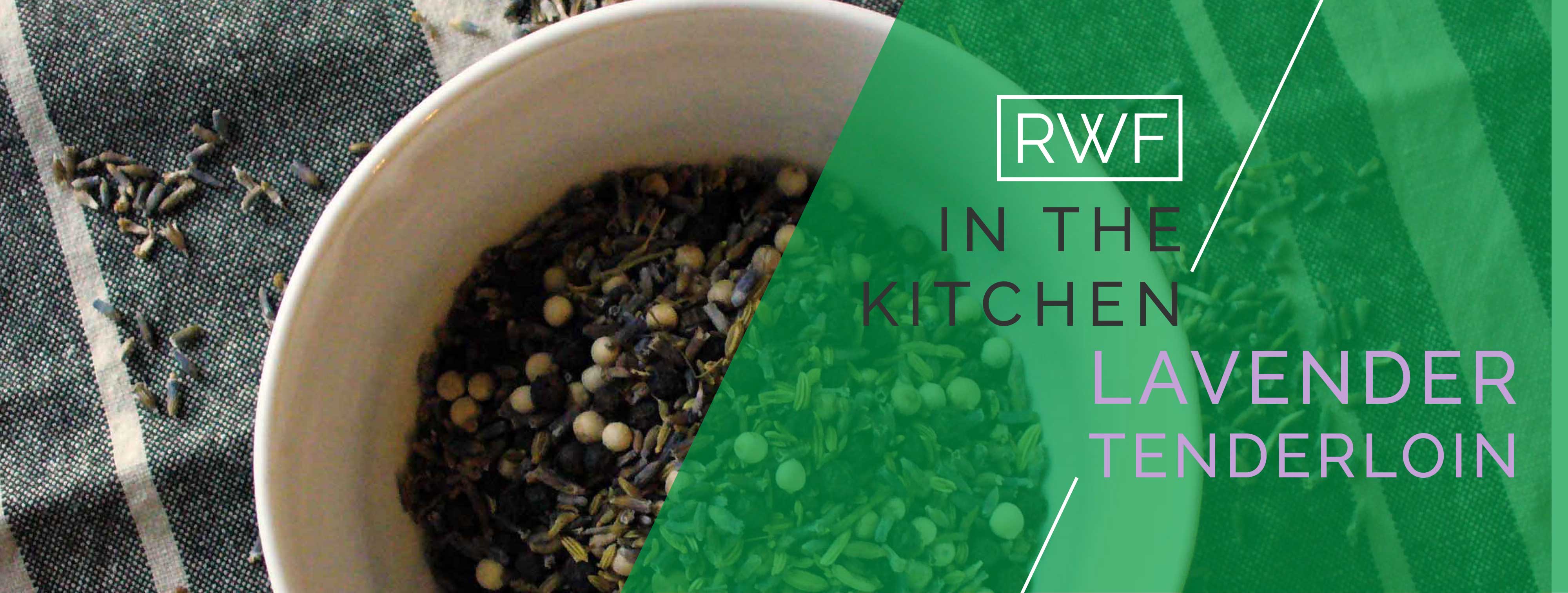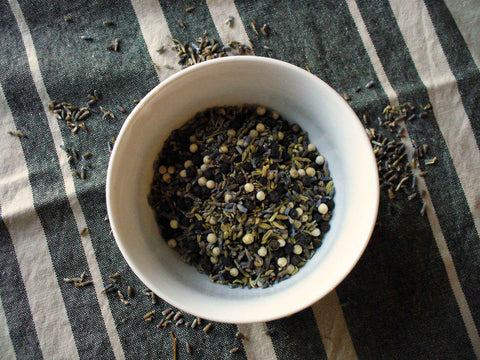Rainwater in the Kitchen: Lavender Tenderloin

We’ve said it before: our ingredients are so natural, you could eat our soap if you wanted to — but that probably doesn’t sound too appetizing (Ralphie from A Christmas Story would agree). A better idea? Let’s explore some of our ingredients that can be just as delicious as they are healthy for your skin. In our first dish of this series, we're cooking Ellen Sullivan's Lavender Tenderloin, from One Big Table by Molly O'Neill.

First up: lavender. We use this plant as an essential oil in many of our favorite products, like our classic Oatmeal Lavender bar soap or our Lavender Clean Mist, and we love its soothing, stress-relieving properties (learn more here). In the kitchen, you can use culinary-grade lavender to impart an herbal, floral note to meats, baked goods, and drinks. For our first foray into food blogging, we’re starting off with a bang—a show-stopping preparation for beef tenderloin that’s easy to serve to a crowd and feels elegant enough for a celebration (we’ve bookmarked this for our 25th anniversary party!).

Lavender is used here in the spice rub—it’s ground with peppercorns and fennel to give the meat a spicy, herbal crust as it tenderizes overnight in the fridge. (Picture a tenderloin relaxing with our Lavender Bath Balm after a long day at work.) About an hour before your guests arrive, you’ll take the meat out, pop it in the oven for a few minutes, and serve while looking like the effortless host that you are. It’s really that easy! And, if you’re not in the mood to serve a crowd, you can easily scale down the size of the tenderloin (or use another favorite cut of meat) and save the leftover spice rub for another day.

If you're in the Nashville area and looking for a locally-sourced tenderloin, we recommend our friends at Porter Road Butcher. Their beef is pasture-raised, free of antibiotics and hormones, and an important source of tallow for our soaps—so you'll be supporting a true circle of sustainability, Lion King-style! Learn more about our collaboration with Porter Road Butcher here.
We hope you enjoy experimenting with this powerful botanical - and if you try this recipe, let us know in the comments! Cheers!
_______________________________________________________________________________
Ellen Sullivan's Lavender Tenderloin
From One Big Table by Molly O'Neill:
In 1998, Ellen Sullivan purchased land in Northern San Diego County, California, named it The Lavender Fields, and planted, grew, and harvested fields of lavender. She also searched for culinary uses for the plant, which is still considered more of an aromatic flower than a herb. "The first modern culinary use I saw was a chef's recipe for lavender crème brûlée, and that got me thinking. Lavender's flavor is both tangy and floral, so it works as well in savory dishes as it does in sweet ones—I love what it does to beef tenderloin." This recipe remains one of Ms. Sullivan's favorite company meals.
Ingredients
- 2 tablespoons dried food-quality lavender buds
- 2 tablespoons fennel seeds
- 1 tablespoon whole black peppercorns
- 1 tablespoon whole white peppercorns
- 1 1/2 teaspoon dried thyme
- One 4 1/2-pound whole beef tenderloin, trimmed and silverskin removed
- 2 tablespoons olive oil
Preparation
- The day before serving, grind the lavender, fennel, peppercorns, thyme, and salt to a powder with a mortar and pestle or in a spice grinder. Rub the tenderloin with the spice mixture, wrap tightly in plastic wrap, and refrigerate for 8 to 24 hours.
- Remove the tenderloin from the refrigerator and let sit at room temperature for 30 minutes. Place an oven rack in the center position and preheat the oven to 425°F. Place a rack inside a roasting pan.
- Remove the plastic wrap, brush off the spices from the tenderloin, and rub with 1 tablespoon of the oil. Place the tenderloin on the rack and roast for 15 minutes, turning once halfway through.
- Reduce the heat to 325°F and roast for 5 to 15 minutes longer, to the desired doneness (an instant-read thermometer will read 125°F for medium rare). Rainwater Note: cooking time may vary depending on the thickness of the cut and your oven temperature; our tenderloin took about 25 minutes to reach 125°.
- Transfer the roast to a carving board and let rest, loosely covered with foil, for 10 minutes. Meanwhile, add the remaining olive oil to the roasting pan, scrape well, and stir to combine the drippings.
- Cut the tenderloin against the grain into 1/2-inch-thick slices and transfer to a serving platter. Drizzle the pan drippings over the meat and serve.
________________________________________________________________________________
From One Big Table: A Portrait of American Cooking by Molly O'Neill. Copyright © 2010 by Molly O'Neill. Published by Simon & Schuster.

Next →
← Previous
